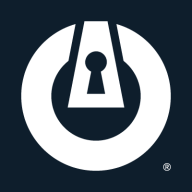

Check Point Application Control and ThreatLocker compete in the cybersecurity software category, focusing on application control and zero-trust endpoint protection. ThreatLocker seems to have the upper hand owing to its efficient security measures and responsive support highlighted in the data comparisons.
Features: Check Point Application Control provides extensive application categorization, a large updated database, and granular user policies for improved security and compliance. ThreatLocker offers a zero-trust model with default denial of unknown applications, ring-fencing to limit unauthorized interactions, and effective application allowlisting, enhancing security and compliance.
Room for Improvement: Check Point faces criticism for complex licensing and high costs, along with a need for better support and real-time monitoring. Users also experience difficulties with application categorization and request improved documentation. ThreatLocker could enhance its user interface, increase visibility into support processes, and reduce the network impact of updates. Integration and training flexibility are also areas needing attention.
Ease of Deployment and Customer Service: Check Point is mainly deployed in on-premises and hybrid settings, with mixed customer feedback on support experience, mainly regarding response time issues. ThreatLocker is versatile, with deployments across on-premises, public, and hybrid clouds. Its support is noted for responsiveness, though some users desire better integration with PSA systems and clearer support processes.
Pricing and ROI: Check Point's high initial and ongoing costs are a concern for users, who suggest more flexible pricing models. Despite the higher costs, users note productivity gains and security improvements. ThreatLocker is generally considered affordable for its capabilities, with users highlighting cost-effectiveness, scalability, and security improvements, leading to a positive ROI.


ThreatLocker Zero Trust Endpoint Protection Platform offers robust endpoint security through application control and allowlisting, safeguarding servers and workstations from unauthorized software execution.
ThreatLocker Zero Trust Endpoint Protection Platform provides extensive application control with features like ring-fencing and selective elevation, ensuring meticulous execution management. Offering learning mode and extensive support, it integrates threat detection and activity monitoring to enhance compliance, reduce costs, and bolster cybersecurity through alerts and approvals. Despite its strengths, there are areas for improvement in training flexibility, policy updates, and interface enhancements, along with challenges in handling non-digitally signed software. Deployed across environments, it works well with existing cybersecurity instruments for real-time threat prevention.
What are the top features of ThreatLocker?ThreatLocker Zero Trust Endpoint Protection Platform is widely implemented to safeguard IT infrastructures against unauthorized access and application use. In sectors where data security is paramount, this platform enables users to prevent unauthorized software installations and control device applications, ensuring real-time threat prevention and compliance with industry regulations.
We monitor all Application Control reviews to prevent fraudulent reviews and keep review quality high. We do not post reviews by company employees or direct competitors. We validate each review for authenticity via cross-reference with LinkedIn, and personal follow-up with the reviewer when necessary.